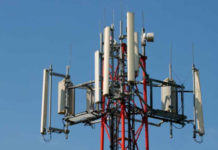Tech cleanup: Files and folders taking valuable storage from your PC
TechDigest- happens. The longer we keep our devices, the more cluttered they become.
Open your phone’s app tray for a great example. How many are sitting there that you haven’t opened in months or years? This clutter isn’t just annoying — it can be dangerous, too.
On your PC, your Start menu is probably a mess, too. That’s easy to clean up and you’ll thank yourself every time you click it.
Then there are all those files you genuinely don’t need. Keep reading for your easy action plan to free up some space like a pro.
Step 1: Empty the Recycle Bin
When you delete a file, it’s not gone. It first goes to the Recycle Bin, waiting for you to take more permanent action. To get them out of purgatory, right-click on your Recycle Bin and click Empty Recycle Bin.
Here’s another option that shows you even more files: Go to Settings > System > Storage > Temporary files. You’ll see a list of temporary files, including the contents of the Recycle Bin. Check the Recycle Bin box (and anything else you want to get rid of), then select Remove files.
Deleting old photos, documents and spreadsheets is just the beginning.
Step 2: Clear temporary files
Read Also:
Temporary files are created to help apps or processes go off without a hitch — or to help with transferring data and other processes. Over time, they can take up a lot of space. To clear them, open your C: drive and select the Windows folder, then Temp (C:\Windows\Temp). Press Ctrl + A to select everything, then hit Delete.
You can also navigate to Settings > System > Storage > Temporary files. Select what you want to delete and hit Remove files.
Sick of paying for expensive software?
Step 3: Wipe out the Hibernation File
When you put your PC to sleep, it stores your open windows, documents, and files in the memory.
Hibernate does the same thing, but it saves these things to your hard drive instead of using your system’s memory. You can disable hibernate if you don’t use it. Here’s how:
Right-click on the Start button or press Win + X, then select Command Prompt (Admin) or Windows PowerShell (Admin). Type the following command to disable hibernation: powercfg.exe /hibernate off.
Step 4: Delete the old version of Windows
Windows automatically deletes the old version of the OS off your machine after an upgrade. You can also manually delete it before that happens to regain some space. Warning: You won’t be able to return to your previous Windows version if you change your mind.
Go to Settings > System > Storage > Temporary files. Under Remove temporary files, select Previous version of Windows and then Remove files.
SOURCE: FoxNews




















